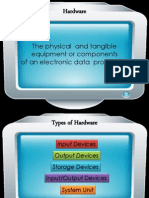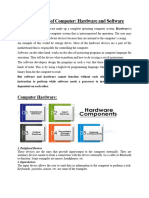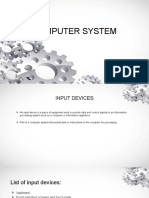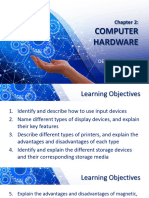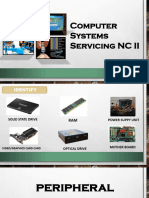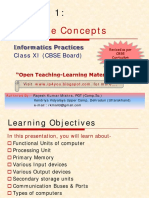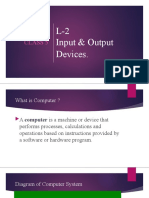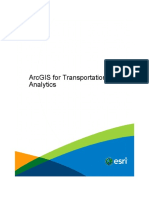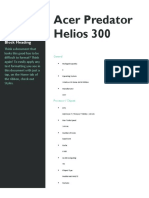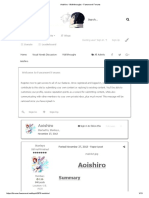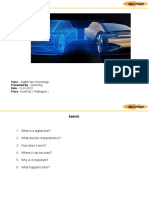0% found this document useful (0 votes)
16 views61 pages01 Introduction To Computing
The document provides an overview of computing, covering the definition of computers, types of devices, input and output mechanisms, and the importance of computer literacy. It discusses hardware and software components, various categories of computers, and the advantages and disadvantages of using computers. Additionally, it highlights the role of memory and storage, as well as the impact of technology on society.
Uploaded by
itadoriyujii977Copyright
© © All Rights Reserved
We take content rights seriously. If you suspect this is your content, claim it here.
Available Formats
Download as PDF, TXT or read online on Scribd
0% found this document useful (0 votes)
16 views61 pages01 Introduction To Computing
The document provides an overview of computing, covering the definition of computers, types of devices, input and output mechanisms, and the importance of computer literacy. It discusses hardware and software components, various categories of computers, and the advantages and disadvantages of using computers. Additionally, it highlights the role of memory and storage, as well as the impact of technology on society.
Uploaded by
itadoriyujii977Copyright
© © All Rights Reserved
We take content rights seriously. If you suspect this is your content, claim it here.
Available Formats
Download as PDF, TXT or read online on Scribd
/ 61











